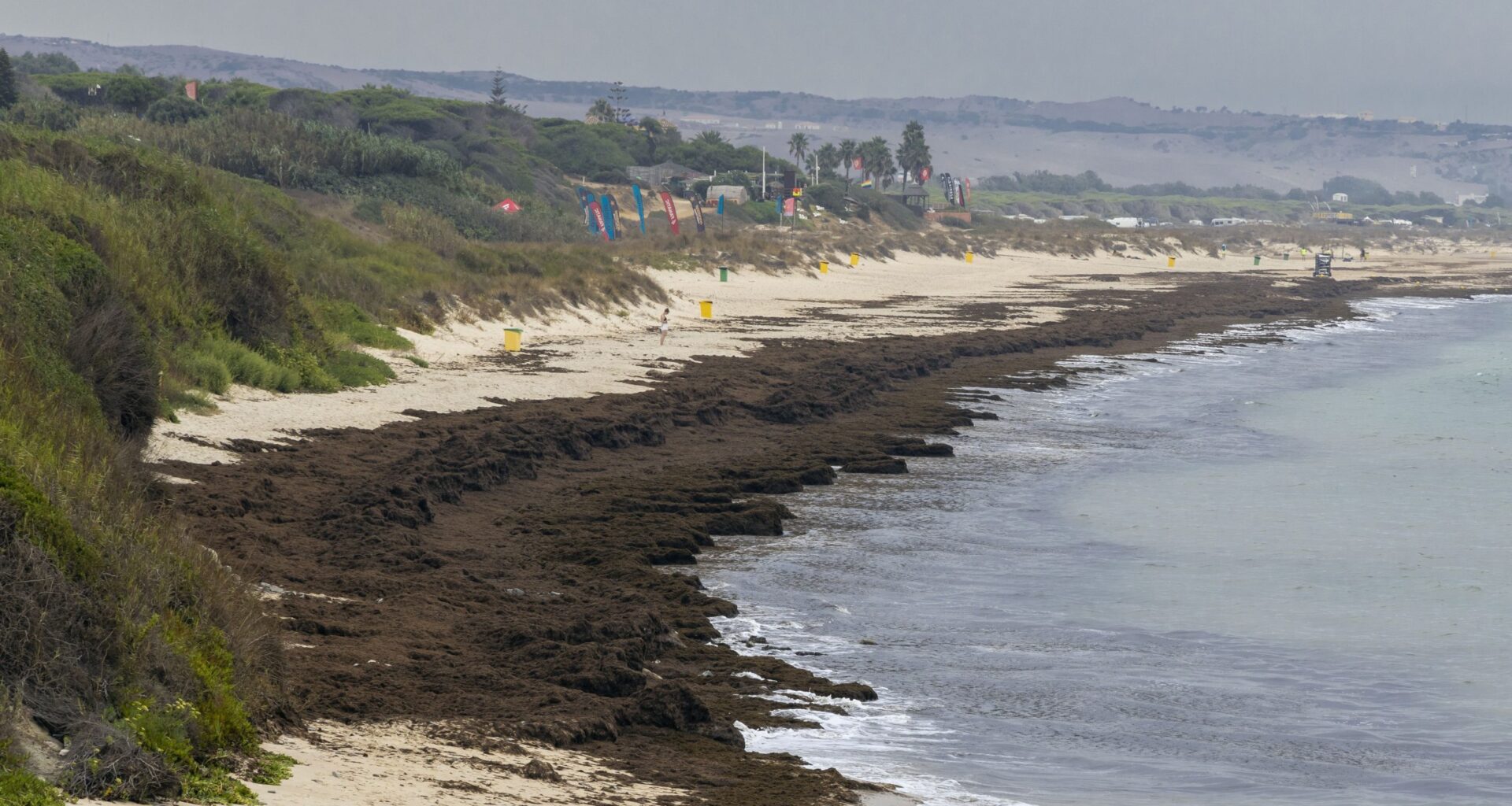The stinky suffocating brown Asian algae that has troubled southern Spain’s fishers for a decade already could now be on the march across the Mediterranean and up into the Bay of Biscay.
Despite its exotic name, the rugulopteryx okamurae algae has become a staple scourge in the Strait of Gibraltar, where white sandy beaches from Cádiz to Málaga are turning a deep olive-brown as the soggy sea sludge creeps onto land, smothering wildlife and disrupting habitats as it goes.
“I’ve seen real mountains of algae. And they stink, they smell absolutely awful,” Basilio Otero, president of the Spanish federation of fishermen’s guilds, told Euractiv, describing it as a full-blown invasion. “During peak season, we are completely overrun”.
Native to the Pacific, the invading algae most likely made its way to Europe through the dumping of ballast water from international vessels and has made headlines again this summer season for the disruption it has caused tourists along Spain’s southern coast.
Beyond tourism and the nuisance for locals, there’s a more devastating economic cost too. Speaking to Euractiv, Nicolás Fernández, who represents fishers in the city of Cádiz, said his phone is packed with photos of boats smothered in algae at the docks.
It gets even worse below the surface of the water. “A friend of mine does underwater photography and he showed us what he was seeing (…) the algae grabs onto a rock, wraps around it and kills everything underneath,” Fernández said, describing it as “like laying down a sheet of football turf over the seafloor.”
That bushy mass stretching across the seabed has slowly suffocated marine ecosystems because the clams, shells and molluscs that bigger fish feast on are buried under the algae.
“[In the Cape of Trafalgar], we’ve not caught a single octopus since 2016,” said Fernández. “It has dramatically transformed the ecosystem”.
Beware, Europe
It doesn’t stop at Spain either, as the algae has already spread eastward further into the Mediterranean, advancing along the country’s southern coast, then reaching France and Algeria, and even making its way to Sicily, Italy, where it was first detected last year.
Otero, from Spain’s fisher lobby, warns it won’t stop in the Mediterranean anytime soon.
“People up north feel safe because waters are cooler, but the algae is adapting and we’ve already found it the Bay of Biscay,” he said. “It won’t reach Brussels, of course, but Belgium might be affected soon”.
The problem is that it’s not easy to deal with since the brown algae behaves differently to other invasive species that crop up in late summer across the continent. “This stuff reproduces when you break it, so you have to be really careful,” Otero said of rugulopteryx okamurae, adding that “the more you destroy it, the faster it spreads”.
If you can’t beat it…
With tonnes of algae piling up, the regional government of Andalucía in southern Spain has adopted a strategy to repurpose it.
Authorities are backing scientists – who can’t find a way of beating back the invader any time soon – to figure out ways to turn a algae into biofuel, biomaterials and even sandals. Researchers even recently got the green light to try to make it into a fertiliser.
But that doesn’t help those out at sea that find their vessels covered in the slimy stuff.
Algae-clogged nets and vanishing fish stocks signal the death of artisanal fishing in the region, Fernández warns, particularly for smaller vessels that don’t have the capacity to follow migrating fish stocks. His father, aged 94, remembers casting out nets decades ago, but that world may soon be over.
“[The authorities] tell us not to throw [the algae] back into the sea when hauling the gear,” said Fernández. “But what are we supposed to do, eat it?”
(ssm, jp)
